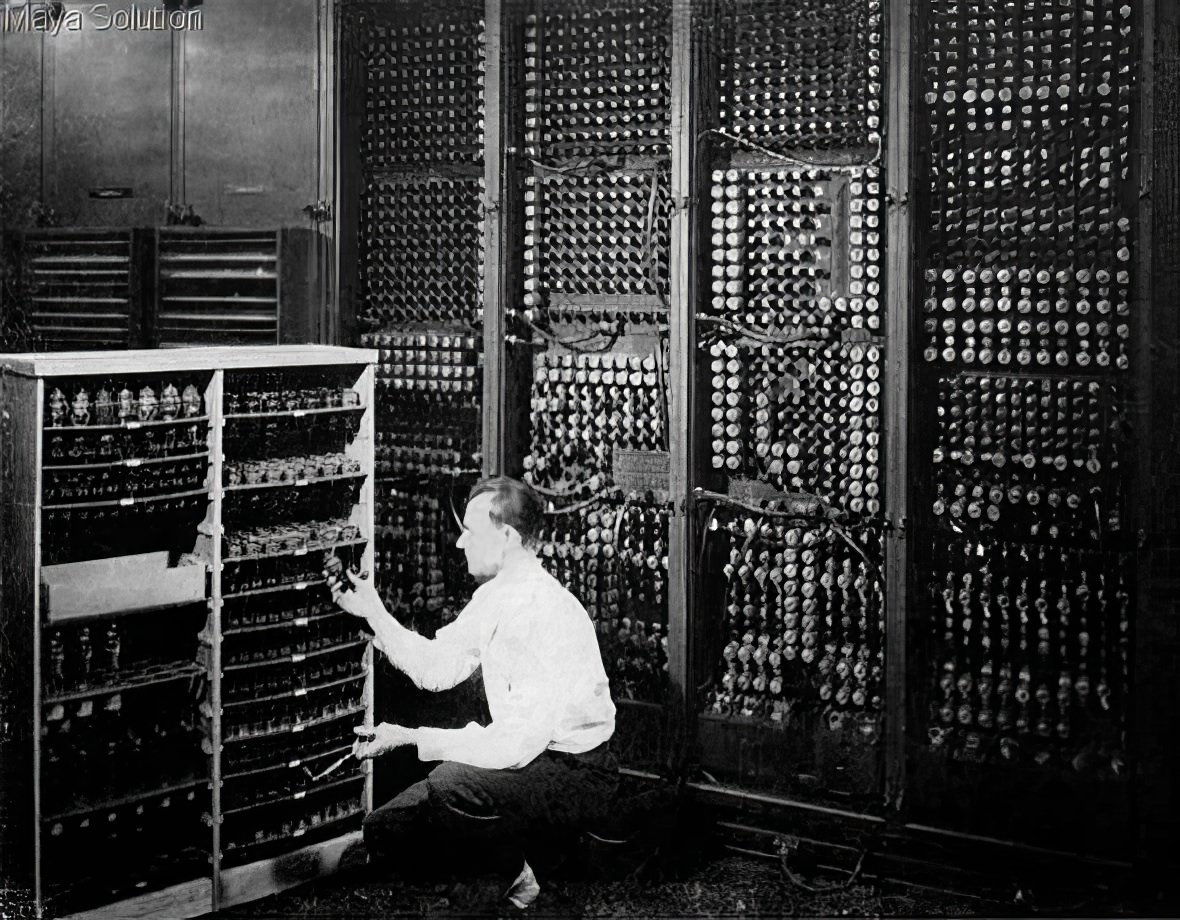The story of computers is one of the most fascinating chapters in human history. The journey from simple mechanical devices to the complex digital systems we use today is filled with innovation, creativity, and remarkable achievements. The first generation of computers, which emerged in the mid-20th century, laid the foundation for the digital age. These early machines were massive, powerful, and groundbreaking, representing the beginning of a technological revolution that would change the world forever.
In the early days, computers were enormous devices that filled entire rooms and required teams of engineers to operate and maintain them. Unlike today’s sleek laptops and smartphones, these first-generation computers relied on vacuum tubes to process and store information. Vacuum tubes, which acted as the machine’s transistors, were bulky and prone to failure. However, they were essential for the early development of computing technology.
The first generation of computers also used punched cards for input and output operations. These cards had holes punched in them to represent data and instructions, which the computer would then read and process. This method was slow and cumbersome compared to modern standards, but it was a critical step in the evolution of data processing..
Read more
One of the most iconic first-generation computers was the ENIAC (Electronic Numerical Integrator and Calculator), which was unveiled in 1946. The ENIAC was a marvel of engineering for its time, capable of performing complex calculations at unprecedented speeds. It marked a significant leap forward in computing power and demonstrated the potential of electronic computers.
Another notable machine was Australia’s CSIRAC, the country’s first computer. Built in the late 1940s and early 1950s, CSIRAC was used for scientific and industrial purposes, showcasing the practical applications of early computing. Similarly, Norway’s DIANA, an analog computer constructed in the early 1950s, played a vital role in solving complex mathematical problems and advancing research.
During this era, computers were primarily used for scientific research, military calculations, and industrial applications. They were powerful tools that could perform tasks far beyond the capabilities of human computation, albeit with significant limitations in speed and memory compared to today’s standards.
The development of these early computers was a collaborative effort involving scientists, engineers, and mathematicians from around the world. Institutions and governments invested heavily in these projects, recognizing the immense potential of electronic computing. This period of rapid innovation and experimentation set the stage for the dramatic advancements in computing that would follow in the coming decades.
#1 AVIDAC, Argonne’s first digital computer, began operation in January 1953.
#2 The CSIRAC was Australia’s first computer. The name stands for CSIR originally stood for “Council for Scientific and Industrial Research”.
#3 The computer history at NTNU is much older than the computer departments. The very first computer at NTNU was called DIANA, or DIfferential ANAlysator. This was an analog electronic computer built by Jens Glad Balchen and the Division of Cybernetics in the years between 1952 and 1955.
#4 A press conference for what is considered the first computer, the Electronic Numerical Integrator and Calculator (ENIAC), was held at the University of Pennsylvania on February 1, 1946.
#5 ENIAC, costing $450,000, was designed by the U.S. Army during World War II to make artillery calculations.
#6 First ever apple computer running windows.
#7 A man and woman working at a Ferranti Pegasus computer. This computer was a classic 1950s/1960s mainframe installation, taking up the majority of space in a room.
#8 First hard disk. The rotating drum technology allowed ERA to deliver the world’s first production stored-program computer (ATLAS – ERA 1101) to a customer site in October 1950.

The engineers making the installation delivery to the National Security Agency predecessor were Frank Mullaney and Jack Hill. As shown in the photo below, these drum products came in various sizes. They were first used in several classified processors, then in the early 1100 computer series and the UNIVAC SS-80 and SS-90 computers. Dr. Cohen and Sid Rubens are credited with patenting the rotating magnetic drum. The drum development engineers and management shown in this early 50’s photo, left to right are: William Keye, Arnold Hendrickson, Robert Perking, Frank Mullaney, Dr. Arnold Cohen, and John ‘Jack’ Hill.
#9 The first ever computer in Latvia was developed and made at the start-up Institute of Electronics and Computer Science in early sixties.

No computers were made industrially in USSR at that time. Therefore successful completion of that project certainly represented a significant achievement. Built on a lot of vacuum tubes, the computer actually worked well and was used for supporting research activities for several years till the time when it became possible to replace it by a more powerful industrially made computer.
#10 IBM 701. IBM’s first computer. Introduced in 1952, the 701 was designed for scientific work and research, which later led to the development of the high-level FORTRAN language.

Nineteen machines were built, a record volume for such a machine in that era. Its internal memory contained 2,048 36-bit words of electrostatic memory and 8,192 words of magnetic drum memory (see early memories). It used magnetic tapes for storage and was one of the first machines to use plastic-based tapes instead of metal tapes. See IBM 650 and IBM 1401. At General Electric’s Aircraft Jet Engine Plant in Evendale, Ohio, this 1954 photo shows GE manager Herbert Grosch explaining the 701 to Ronald Reagan. Reagan was a TV personality for GE at the time.











